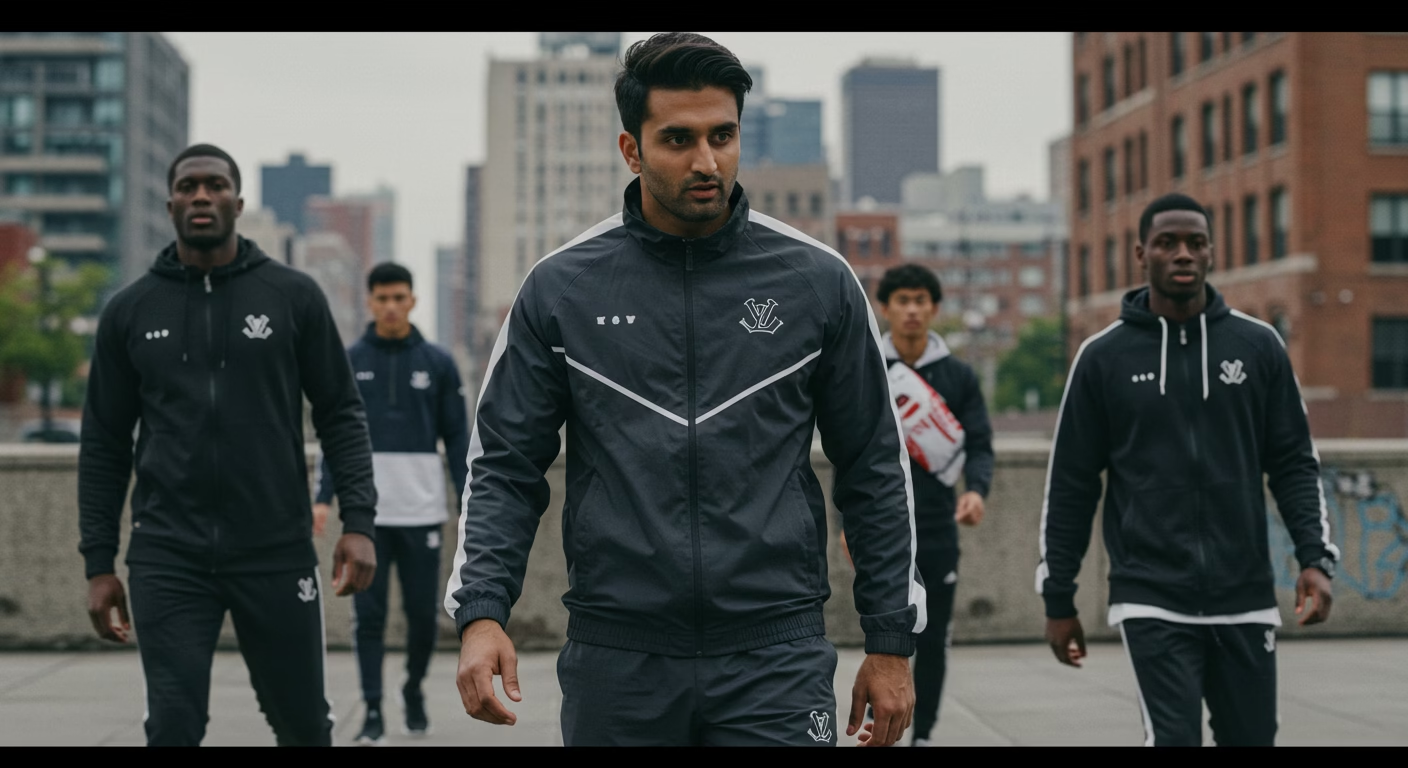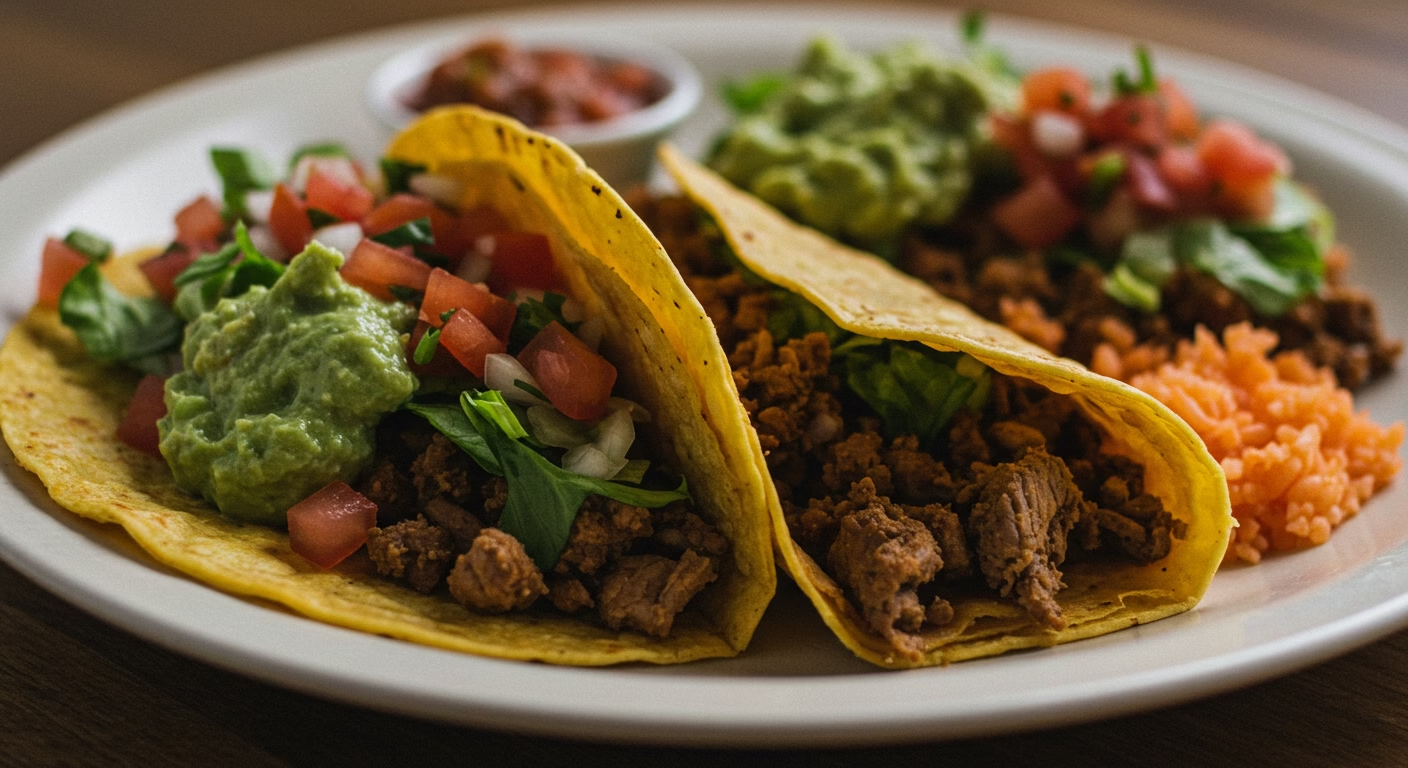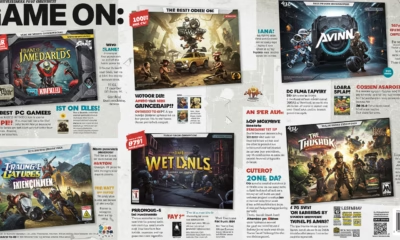BLOG
Athlete Fashion Collaborations: The Fusion of Sports and Style

The relationship between sports and fashion has deepened significantly, with athlete fashion collaborations now driving major industry innovations. While such partnerships existed previously, today’s collaborations represent a fundamental shift – athletes are no longer just endorsers but creative directors and equity partners. LeBron James’ groundbreaking Nike collections and Serena Williams’ successful fashion line exemplify this transformation, where performance expertise meets design vision.
What makes modern athlete fashion collaborations particularly impactful is their authenticity. Consumers increasingly value products with genuine stories, and athletes bring their personal style journeys to these partnerships. Furthermore, these collaborations often bridge cultural gaps, making high fashion more accessible while elevating sportswear’s prestige. The result is apparel and footwear that resonates across diverse audiences.
The success of athlete fashion collaborations stems from multiple factors. Athletes provide real-world testing insights that improve functionality, while designers contribute technical craftsmanship. Additionally, social media has amplified these partnerships, allowing fans to engage directly with the creative process. As the market evolves, we’re seeing more sustainable materials and inclusive sizing in these collections.
Ultimately, athlete fashion collaborations have moved beyond mere marketing to become meaningful cultural touchstones that reflect our evolving definitions of both athletics and style.
These partnerships are more than just marketing strategies—they represent a cultural shift where athletes are not just endorsers but creative collaborators, influencers, and trendsetters. This article explores the rise of athlete-fashion collaborations, their impact on the industry, notable partnerships, and what the future holds for this dynamic fusion.
1. The Rise of Athlete-Fashion Collaborations
A. From Endorsements to Creative Partnerships
Traditionally, athletes were limited to endorsement deals, where they simply wore or promoted a brand’s products. However, today’s collaborations go beyond logos—athletes now co-design collections, influence brand aesthetics, and even launch their own labels.
B. Why Athletes Are the New Fashion Icons
- Influence & Reach – Athletes have massive social media followings.
- Crossover Appeal – Sports stars are now red carpet regulars.
- Authenticity – Fans trust athletes’ style choices more than traditional models.
C. The Business Impact
- Increased Sales – Limited-edition collaborations sell out instantly.
- Brand Credibility – Athletes bring authenticity to fashion brands.
- Diversified Audience – Sports fans become fashion consumers.
2. Notable Athlete-Fashion Collaborations
A. Sneaker Culture: The Biggest Market
Sneaker collaborations between athletes and brands dominate the industry. Some iconic partnerships include:
1. Michael Jordan x Nike (Air Jordan)
- Launched in 1984, the Air Jordan line revolutionized sneaker culture.
- Generates over $5 billion annually for Nike.
2. LeBron James x Nike
- LeBron’s signature sneakers are among the most sought-after in basketball.
- Includes lifestyle collections beyond performance shoes.
3. Kanye West x Adidas (Yeezy)
- Though controversial, Yeezy redefined athlete-fashion collabs.
- Blurs the line between sports, streetwear, and high fashion.
B. Apparel & Lifestyle Collections
Athletes are expanding beyond footwear into full fashion lines:
1. Serena Williams x Nike (Queen Collection)
- Celebrates female empowerment and bold fashion.
- Mixes athletic wear with high-fashion elements.
2. Roger Federer x Uniqlo
- A $300 million deal focusing on minimalist, performance-oriented fashion.
3. David Beckham x H&M
- Merges sportswear with casual elegance.
C. Luxury Fashion Partnerships
High-end brands are also tapping into athlete influence:
1. Cristiano Ronaldo x CR7 (Under Armour, Nike, Jacob & Co.)
- Includes underwear, fragrances, and luxury watches.
2. Lewis Hamilton x Tommy Hilfiger
- Sustainable fashion line promoting eco-friendly materials.
3. Naomi Osaka x Louis Vuitton & Nike
- Balances high fashion with sporty streetwear.
3. Why These Collaborations Work
A. Athletes as Trendsetters
- Their off-court style is as influential as their on-court performance.
- Social media amplifies their fashion choices.
B. Authentic Storytelling
- Fans connect with athletes’ personal styles and journeys.
- Collections often reflect the athlete’s cultural background and values.
C. Exclusivity & Hype
- Limited drops create urgency (e.g., Travis Scott x Nike).
- Resale markets thrive on athlete-branded merchandise.
4. The Impact on Fashion & Sports Industries
A. Blurring the Lines Between Sportswear & High Fashion
- Brands like Balenciaga and Gucci now incorporate athletic aesthetics.
- Streetwear has become a dominant force in luxury fashion.
B. Changing Consumer Behavior
- Fans buy apparel for style, not just functionality.
- Athleisure is now a staple in everyday wardrobes.
C. Economic Growth
- The global sportswear market is projected to reach $550 billion by 2030.
- Collaborations drive stock prices and brand valuations.
5. Challenges & Criticisms
A. Over-Saturation
- Some collaborations feel forced or lack authenticity.
B. High Price Points
- Limited-edition drops can be inaccessible to average consumers.
C. Sustainability Concerns
- Fast-fashion collaborations contribute to environmental waste.
6. The Future of Athlete-Fashion Collaborations
A. More Diversity & Inclusivity
- Increasing collaborations with female and non-binary athletes.
B. Tech-Infused Fashion
- Smart fabrics and wearable tech in athlete-designed apparel.
C. Sustainability Focus
- Eco-conscious collections (e.g., Lewis Hamilton’s vegan leather line).
D. Virtual & Digital Fashion
- NFTs and metaverse collaborations (e.g., NBA Top Shot).
7. Conclusion: The Winning Formula
The rise of athlete fashion collaborations represents a permanent shift in how sports and style intersect. These partnerships have evolved far beyond traditional endorsements, now serving as creative laboratories where performance wear meets high fashion. Initially, such collaborations focused mainly on footwear, but they’ve since expanded to encompass everything from luxury streetwear to sustainable activewear.
What makes athlete fashion collaborations particularly impactful is their triple-win dynamic. Brands gain authenticity by associating with elite performers, athletes express their personal style beyond uniforms, and consumers access innovative designs with athletic credibility. Furthermore, these partnerships often incorporate cultural storytelling, connecting products to athletes’ backgrounds and values.
The success of athlete fashion collaborations stems from their ability to merge functionality with aesthetics. Performance fabrics and ergonomic designs meet cutting-edge silhouettes, creating pieces equally suited for training sessions or urban exploration. Additionally, limited-edition releases generate exclusivity, while inclusive sizing initiatives broaden accessibility.
As the market grows, collaborations are becoming more sophisticated. Some now integrate smart technology, while others prioritize eco-conscious production. Ultimately, athlete fashion collaborations will continue redefining sportswear by blending innovation, culture, and commerce in compelling new ways.
As the industry evolves, we can expect even more innovative, inclusive, and sustainable collaborations that push the boundaries of both sports and fashion.
Final Thoughts
The intersection of sports and fashion has evolved into a powerful cultural force, with athlete fashion collaborations driving much of this transformation. What began as simple endorsement deals has blossomed into creative partnerships that reshape entire industries. These collaborations matter because they blend authentic athletic credibility with cutting-edge design sensibilities, creating products that resonate far beyond traditional fan bases.
One key factor behind the success of athlete fashion collaborations is their unique ability to bridge different worlds. Professional athletes bring their discipline and performance expertise, while designers contribute artistic vision and technical craftsmanship. Together, they develop pieces that are both functional and fashionable, appealing to consumers who value substance alongside style. Furthermore, these partnerships often highlight sustainability initiatives, as many athlete-led collections now prioritize eco-friendly materials and production methods.
The impact of athlete fashion collaborations extends beyond commerce into cultural commentary. They challenge outdated notions that athletes belong solely on fields and courts, instead positioning them as multidimensional influencers. Additionally, these partnerships frequently celebrate diversity, with collaborations increasingly featuring athletes from underrepresented backgrounds and sports. This shift makes fashion more inclusive while giving lesser-known sports greater visibility.
Looking ahead, athlete fashion collaborations will likely become even more innovative. Some partnerships now incorporate technology like smart fabrics, while others explore limited-edition art pieces. As consumers continue valuing authenticity and purpose in their purchases, these collaborations offer compelling narratives that mass-produced items cannot match.
Ultimately, athlete fashion collaborations represent more than just merchandise—they symbolize how modern influencers can drive meaningful change across industries. By merging performance needs with aesthetic appeal, these partnerships are redefining sportswear and high fashion alike.
Which athlete-fashion collaboration is your favorite? Share your thoughts!
BLOG
EJ Tackett Net Worth: A Deep Dive into the Bowling Champion’s Earnings and Career

EJ Tackett stands among bowling’s elite, dominating the PBA Tour with multiple titles and major championships. His impressive career, fuelled by tournament wins and lucrative sponsorships, has amassed an estimated net worth of $2–4 million. Key victories like the 2023 PBA Players Championship and 2024 Tournament of Champions earned six-figure payouts, while partnerships with Storm Bowling and other brands boost his income. Compared to legends like Belmonte and Williams, Tackett’s financial success continues rising as he competes at his peak. His journey exemplifies how skill and smart career moves translate to prosperity in professional bowling.
Early Life and Career Beginnings
Born on December 28, 1992, in Huntington, Indiana, EJ Tackett showed an early passion for bowling. He began competing in youth leagues and quickly rose through the ranks, demonstrating exceptional talent. His amateur success paved the way for his professional career, and he joined the PBA Tour in 2013.
Tackett’s rookie season was nothing short of spectacular. He won his first PBA title at the 2013 PBA Cheetah Championship, becoming one of the youngest players to achieve such a feat. This victory marked the beginning of a highly successful career that would see him become one of the sport’s top earners.
Career Achievements and Major Wins
EJ Tackett’s career is decorated with numerous titles and accolades, making him one of the most dominant bowlers in modern PBA history. Some of his most notable achievements include:
- Multiple PBA Tour Titles: As of 2024, Tackett has won over 15 PBA Tour titles, including several major championships.
- Major Championships:
- 2016 PBA World Championship (his first major win)
- 2023 PBA Players Championship
- 2023 PBA Tour Finals
- 2024 PBA Tournament of Champions
- PBA Player of the Year (2023): Recognised as the best bowler of the year after an outstanding season.
- Multiple 300 Games: Known for his precision, Tackett has bowled multiple perfect games in professional competition.
These victories have not only solidified his reputation as an elite bowler but have also significantly boosted his earnings through prize money and endorsements.
EJ Tackett’s Net Worth in 2024
As of 2024, EJ Tackett’s estimated net worth is between 2 million and 4 million. This figure is derived from his tournament winnings, sponsorships, and other business ventures.
Breakdown of Income Sources
1. PBA Tour Earnings
Tackett has earned over 1.5 million∗∗ in prize money throughout his career. His biggest paydays have come from major tournaments, where winners can take home ∗∗1.5 million∗∗ in prize money throughout his career. or more. For example:
- 2023 PBA Players Championship: $100,000
- 2024 PBA Tournament of Champions: $100,000+
- Multiple standard PBA titles: 20,000−50,000 per win
2. Sponsorships and Endorsements
Like many professional athletes, Tackett earns a significant portion of his income through sponsorships. Some of his major sponsors include:
- Storm Bowling: One of the leading bowling ball manufacturers, Storm has been a long-time sponsor.
- VISE Grips: A company specialising in bowling accessories.
- Bowling.com: An online retailer that partners with top bowlers.
- Other apparel and equipment deals
These endorsements likely contribute hundreds of thousands of dollars annually to his net worth.
3. Exhibition Matches and Appearances
Tackett participates in high-profile exhibition matches, corporate events, and bowling clinics, which add to his income. These appearances can command 5,000−20,000 per event, depending on the scale.
4. Social Media and Brand Collaborations
With a growing following on platforms like Instagram and YouTube, Tackett monetises his online presence through brand promotions and content partnerships.
5. Investments and Business Ventures
While not much is publicly known about his investments, many professional athletes diversify their income through real estate, stocks, or bowling-related businesses.
Comparison to Other Top PBA Bowlers
EJ Tackett is among the highest-earning bowlers in the PBA. Here’s how his net worth compares to other top players:
- Jason Belmonte: Estimated net worth of $5 million+ (highest-earning bowler)
- Pete Weber: Estimated net worth of $3 million (legendary bowler)
- Walter Ray Williams Jr.: Estimated net worth of $4 million (all-time PBA titles leader)
While Tackett hasn’t yet reached the financial heights of Belmonte or Williams, his career is still in its prime, and his net worth is expected to grow.
Lifestyle and Spending Habits
Unlike some high-profile athletes, Tackett maintains a relatively low-key lifestyle. He resides in Bluffton, Indiana, and focuses on his career rather than extravagant spending. However, he does invest in:
- High-performance bowling equipment (custom balls, shoes, and accessories)
- Travel and training expenses (competing globally requires significant investment)
- Charitable contributions (he supports youth bowling programs)
Future Earnings Potential
At 31 years old, EJ Tackett is still in his competitive prime. With several more years of high-level bowling ahead, his net worth could rise significantly. Factors that could increase his earnings include:
- Winning more major championships
- Securing bigger endorsement deals
- Expanding his media presence (YouTube, podcasts, etc.)
- Potential broadcasting opportunities post-retirement
Conclusion
EJ Tackett’s net worth, estimated between 2 million and 4 million, reflects his status as one of bowling’s elite athletes. Thanks to his relentless dedication, he has risen to the top of the Professional Bowlers Association (PBA) Tour. Currently, his wealth stems from multiple income streams, including tournament winnings, sponsorships, and endorsements.
Moreover, sponsorships significantly boost his earnings. As a result of his success, brands like Storm Bowling, VISE Grips, and Bowling.com partner with him, likely adding hundreds of thousands annually. Beyond that, Tackett earns from exhibition matches, public appearances, and social media promotions.
In comparison to other top bowlers, Tackett’s net worth is impressive but still growing. While legends like Jason Belmonte (5M+) and Walter Ray WalterRayWilliamsJr.( higher totals, Tackett’s career is still in its prime. Therefore, his financial standing is expected to climb as he wins more titles and secures bigger deals.
Ultimately, Tackett’s journey proves that skill, perseverance, and smart financial choices lead to success. For aspiring bowlers, his story is a blueprint for turning passion into prosperity. As he continues to dominate, his net worth—and legacy—will only rise.
Would you like any additional details on his career or financial strategies?
BLOG
Exploring Halal Mexican Food Near Me: A Flavorful Fusion

Mexican cuisine is beloved worldwide for its bold flavors, vibrant spices, and diverse textures. From sizzling fajitas to cheesy quesadillas, Mexican food offers something for everyone. But for Muslim diners, finding Halal Mexican food can sometimes be a challenge. Fortunately, many restaurants and food trucks now cater to Halal dietary requirements, ensuring that everyone can enjoy authentic Mexican flavors without compromising their faith.
In this article, we’ll explore:
-
What makes Mexican food Halal
-
Popular Halal Mexican dishes to try
-
How to find the best food
-
Top cities with Halal Mexican restaurants
-
Tips for cooking Halal Mexican food at home
Whether you’re craving tacos, burritos, or nachos, this guide will help you discover delicious Halal Mexican options in your area.
What Makes Mexican Food Halal?
For Mexican food to be considered Halal, it must adhere to Islamic dietary laws. This means:
-
Meat must be from a Halal-certified source – Beef, chicken, and lamb should be slaughtered according to Islamic guidelines.
-
No pork or pork by-products – Traditional Mexican dishes often use pork (like carnitas or chorizo), so Halal versions substitute beef, chicken, or plant-based proteins.
-
Alcohol-free cooking – Some Mexican sauces and marinades contain alcohol, so Halal versions avoid these ingredients.
-
Cross-contamination prevention – Restaurants must ensure that Halal meat is not cooked on the same grill as non-Halal items.
Many Mexican restaurants now offer Halal-certified meat or clearly label their Halal options, making it easier for Muslim customers to enjoy their meals with confidence.
Popular Halal Mexican Dishes to Try
If you’re new to Halal Mexican cuisine, here are some must-try dishes:
1. Halal Tacos
-
Carne Asada Tacos – Grilled Halal beef with onions, cilantro, and lime.
-
Chicken Tinga Tacos – Shredded chicken in a smoky chipotle sauce.
-
Vegetarian Tacos – Filled with beans, grilled veggies, and avocado.
2. Halal Burritos & Quesadillas
-
Beef Barbacoa Burrito – Slow-cooked Halal beef wrapped in a flour tortilla with rice, beans, and cheese.
-
Chicken Quesadilla – Melted cheese and grilled chicken between crispy tortillas.
3. Halal Nachos
-
Loaded with Halal ground beef, cheese, jalapeños, and sour cream.
4. Halal Mexican Bowls
-
Burrito Bowl – Rice, black beans, grilled chicken, salsa, and guacamole.
-
Fajita Bowl – Sizzling peppers, onions, and steak over cilantro-lime rice.
5. Halal Enchiladas & Tamales
-
Chicken Enchiladas – Rolled tortillas stuffed with chicken and smothered in red or green sauce.
-
Beef Tamales – Steamed masa dough filled with spiced Halal beef.
How to Find Halal Mexican Food Near Me
Searching for “Halal Mexican food near me”? Here are some ways to locate the best spots:
1. Google & Restaurant Apps
-
Search “Halal Mexican restaurant near me” on Google Maps or Yelp.
-
Check reviews to confirm Halal authenticity.
2. Social Media & Food Blogs
-
Instagram and TikTok often feature foodies reviewing Halal Mexican spots.
-
Follow hashtags like #HalalMexicanFood or #HalalTacos.
3. Halal Certification Websites
-
Websites like Zabihah.com list Halal-certified restaurants, including Mexican eateries.
4. Ask Local Muslim Communities
-
Mosques or Islamic centers often have recommendations for Halal restaurants.
Top Cities for Halal Mexican Food
While this food is growing in popularity, some cities have more options than others:
1. Los Angeles, California
-
Home to many Halal food trucks serving Mexican fusion.
-
Try “Halal Tacos LA” or “Mexican Halal Grill.”
2. New York City, New York
-
Famous for “The Halal Guys” (who also serve Mexican-inspired dishes).
-
Check out “Villa Halal Tacos” in Brooklyn.
3. Houston, Texas
-
A hub for Tex-Mex cuisine with several Halal options.
-
Visit “Al Aseel Grill” for Halal Mexican flavors.
4. Chicago, Illinois
-
“Cairo Kabab” offers Halal Mexican-Kebab fusion.
5. Toronto, Canada
-
“Burrito Boyz” has Halal-certified Mexican options.
Tips for Cooking Halal Mexican Food at Home
If you can’t find a Halal Mexican restaurant nearby, try making it yourself!
1. Use Halal Meat
-
Buy Halal-certified chicken, beef, or lamb from local butchers or online stores.
2. Substitute Pork with Beef or Chicken
-
Replace chorizo with Halal beef sausage.
-
Use chicken instead of pork in carnitas.
3. Make Homemade Salsas & Sauces
-
Avoid store-bought sauces with alcohol; make fresh pico de gallo or guacamole.
4. Try Vegan Mexican Recipes
-
Black bean tacos, veggie fajitas, and avocado enchiladas are naturally Halal.
Conclusion
Craving bold, flavorful Mexican cuisine that aligns with Halal dietary guidelines? You’re in luck! Finding Halal Mexican food near me has become more accessible than ever, with an increasing number of restaurants and food trucks catering to Muslim diners. Whether you’re searching for sizzling fajitas, cheesy quesadillas, or loaded nachos, there are plenty of Halal Mexican food near me options to satisfy your taste buds.
Thanks to rising demand, many eateries now offer Halal-certified beef, chicken, and lamb in traditional Mexican dishes. Instead of pork-based carnitas or chorizo, you can enjoy savory substitutes like grilled Halal beef tacos or spicy chicken burritos. A quick search for “Halal Mexican food near me” on Google Maps or Zabihah.com can help you locate the best spots in your area.
So next time you’re craving authentic flavors, remember—delicious Halal Mexican food near me is just around the corner. Whether you explore local restaurants or whip up a homemade feast, you can enjoy the best of Mexican cuisine while staying true to your dietary values. Don’t wait—search for Halal Mexican food near me today and treat yourself to a fiesta of flavors!
Next time you crave tacos or burritos, search for a Halal Mexican spot near you—or try making your own!
Final Thoughts
-
Always verify Halal certification before dining.
-
Support local Halal Mexican businesses to encourage more options.
-
Experiment with homemade recipes for a personalized touch.
Happy eating!
BLOG
Small Warehouse for Rent: A Comprehensive Guide

In today’s competitive business landscape, efficient storage solutions are essential for companies across all sectors. For small business owners, e-commerce retailers, and logistics operators alike, renting a compact warehouse offers a practical and economical way to address storage requirements. This solution provides businesses with the flexibility to scale operations without significant capital investment, while maintaining control over inventory management.
The advantages of small warehouse rentals extend beyond basic storage. They enable businesses to optimize their supply chain, improve order fulfillment efficiency, and reduce overhead costs compared to larger facilities. When considering warehouse rental options, key factors include the property’s location relative to transportation networks, the availability of modern amenities, and lease terms that align with business growth projections.
Strategic placement near major highways or urban centers can significantly impact logistical efficiency and customer delivery times. Additionally, modern warehouse features such as climate control and advanced security systems can provide crucial protection for sensitive inventory. By carefully evaluating these elements, businesses can secure warehouse space that not only meets their current needs but also supports future expansion. This guide will explore these considerations in detail to help you make an informed decision about your storage solution.
Why Rent a Small Warehouse?
1. Cost-Effective Storage Solution
Renting a small warehouse is more affordable than purchasing or building one. It eliminates the need for a large upfront investment, making it ideal for startups and small businesses.
2. Flexibility in Lease Terms
Many warehouse providers offer flexible lease agreements, allowing businesses to rent space for short-term or long-term periods based on their needs.
3. Scalability for Growing Businesses
As your business expands, you may need more storage space. Renting a small warehouse allows you to easily upgrade to a larger facility when required.
4. Improved Inventory Management
A dedicated warehouse helps businesses organize inventory efficiently, reducing the risk of stock mismanagement and improving order fulfillment processes.
5. Enhanced Security
Most warehouses come with security features such as CCTV surveillance, gated access, and alarm systems, ensuring the safety of stored goods.
Factors to Consider When Renting a Small Warehouse
1. Location
- Proximity to Transportation Hubs: Choose a warehouse near highways, ports, or airports for easy logistics.
- Accessibility for Employees & Customers: Ensure the location is convenient for staff and clients if needed.
- Local Zoning Laws: Verify that the warehouse complies with local regulations for your type of business.
2. Size and Layout
- Square Footage: Determine the required space based on inventory volume.
- Ceiling Height: Higher ceilings allow for vertical storage solutions like pallet racks.
- Loading Docks & Doors: Check for sufficient loading/unloading facilities.
3. Lease Terms & Costs
- Rental Rates: Compare prices per square foot in different areas.
- Additional Fees: Inquire about utility costs, maintenance fees, and insurance requirements.
- Lease Duration: Decide between short-term (monthly) or long-term (yearly) leases.
4. Warehouse Features & Amenities
- Climate Control: Essential for storing perishable or sensitive goods.
- Security Systems: Look for 24/7 surveillance, fire alarms, and secure access.
- Parking & Office Space: Some warehouses offer additional office space or employee parking.
5. Future Growth Potential
Ensure the facility can accommodate business expansion if needed. Some landlords allow tenants to expand within the same property.
Ideal Locations for Small Warehouse Rentals
1. Industrial Zones
Industrial parks often provide affordable rental rates and are designed for logistics operations.
2. Suburban Areas
Suburban warehouses may offer lower rental costs compared to urban centers while still being accessible.
3. Near Major Cities
Renting near metropolitan areas ensures quick delivery to customers but may come at a higher price.
4. Ports & Logistics Hubs
Ideal for import/export businesses needing quick access to shipping routes.
Pricing Trends for Small Warehouse Rentals
Warehouse rental costs vary depending on location, size, and amenities. Here’s a general overview:
- Urban Areas: 1.50−3.50 per sq. ft./month
- Suburban/Industrial Zones: 0.75−2.00 per sq. ft./month
- Specialized Warehouses (Climate-Controlled): 2.00−5.00 per sq. ft./month
Additional costs may include:
- Security deposits (1-2 months’ rent)
- Utility bills (electricity, water, internet)
- Insurance and maintenance fees
How to Find the Best Small Warehouse for Rent
1. Online Listings & Marketplaces
Websites like LoopNet, Craigslist, and CommercialCafe list available warehouses for rent.
2. Real Estate Agents Specializing in Commercial Properties
Agents can help negotiate lease terms and find properties that match your requirements.
3. Local Business Networks & Referrals
Ask other business owners for recommendations on reliable warehouse providers.
4. Warehouse Sharing & Co-Warehousing
Some companies offer shared warehouse spaces, reducing costs for small businesses.
5. Visiting Potential Warehouses
Always inspect the facility in person to check for structural integrity, cleanliness, and security features.
Tips for Negotiating a Warehouse Lease
- Compare Multiple Options: Don’t settle for the first offer; compare prices and amenities.
- Negotiate Lease Terms: Ask for flexible payment plans or discounts for long-term leases.
- Clarify Maintenance Responsibilities: Ensure the landlord covers major repairs.
- Review the Contract Thoroughly: Check for hidden fees and exit clauses.
Conclusion
Renting a small warehouse is an excellent solution for businesses seeking efficient, scalable, and secure storage. First, it provides a cost-effective way to manage inventory without the high expenses of owning a facility. Additionally, leasing offers flexibility, allowing companies to adjust space as their needs change.
When choosing a warehouse, several factors must be considered. For instance, location is crucial—proximity to transportation hubs reduces shipping costs and speeds up logistics. Similarly, size matters; a well-planned layout maximizes storage efficiency. Moreover, businesses should evaluate lease terms to ensure they align with budget and operational requirements.
Another key aspect is cost. While urban warehouses may be more expensive, suburban or industrial zones often offer lower rates. However, additional expenses like utilities, insurance, and maintenance should also be factored in. Therefore, comparing multiple options helps secure the best deal.
Furthermore, security features such as surveillance systems and gated access protect valuable inventory. In contrast, neglecting these aspects could lead to losses. Ultimately, a well-chosen warehouse enhances productivity by streamlining storage and logistics.
To summarize, renting a small warehouse supports business growth by providing adaptable, secure, and cost-efficient storage. By carefully assessing location, size, pricing, and lease terms, companies can find the ideal space to meet their needs. As a result, they can focus on scaling operations while maintaining an organized and efficient supply chain.
Start your search today and secure a small warehouse that meets your business needs!
-

 EDUCATION4 weeks ago
EDUCATION4 weeks agoQawerdehidom: Origins, Principles, and Modern Applications
-

 BLOG2 months ago
BLOG2 months ago“Teenthailand_11_SC1: Unveiling Thailand’s Youth Culture”
-

 EDUCATION4 weeks ago
EDUCATION4 weeks agoJollyJerk.com: The Curious Case of an Internet Alias and Its Cultural Significance
-

 BLOG2 months ago
BLOG2 months agoTheapknews.shop Health: Your Gateway to Wellness and Tech
-

 ENTERTAINMENT2 months ago
ENTERTAINMENT2 months agoWhat Are Coachella Co-Chairs: The Visionaries Behind the Iconic Festival
-

 BLOG1 month ago
BLOG1 month agoPO18: A Comprehensive Guide to Its Meaning and Applications
-

 BLOG2 months ago
BLOG2 months agoCricket Rivalry: Exploring the Most Famous Rivalries in Cricket
-

 ENTERTAINMENT3 months ago
ENTERTAINMENT3 months agoGame On: The Best PC Games to Play Right Now


